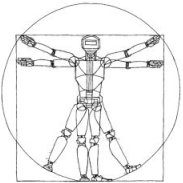Robotics: Science and Systems II
An Equilibrium Point based Model Unifying Movement Control in Humanoids
X. Gu, D. BallardAbstract: Despite all the dynamics methods effectively used in robotics control, few tackle the intricacies of the human musculoskeletal system itself. During movements, a huge amount of energy can be stored passively in the biomechanics of the muscle system. Controlling such a system in a way that takes advantage of the stored energy has lead to the Equilibrium-point hypothesis (EPH). In this paper, we propose a two-phase model based on the EPH. Our model is simple and general enough to be extended to various motions over all body parts. In therst phase, gradient descent is used to obtain one kinematics endpoint in joint space, given a task in Cartesian space. In the second phase where the movements are actually executed, we use damped springs to simulate muscles to drive the limb joints. The model is demonstrated by a humanoid doing walking, reaching, and grasping.
Bibtex:
@INPROCEEDINGS{ Gu-RSS-06,
AUTHOR = {X. Gu and D. Ballard},
TITLE = {An Equilibrium Point based Model Unifying Movement Control in Humanoids},
BOOKTITLE = {Proceedings of Robotics: Science and Systems},
YEAR = {2006},
ADDRESS = {Philadelphia, USA},
MONTH = {August},
DOI = {10.15607/RSS.2006.II.017}
}
